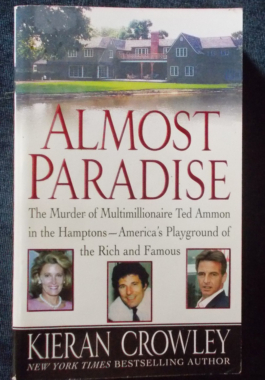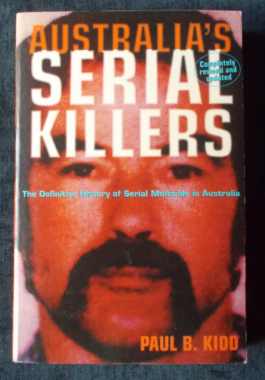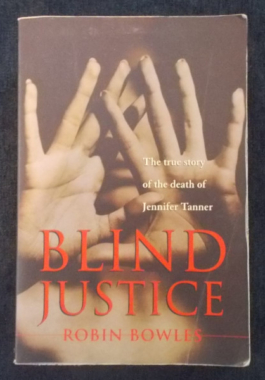-
 The Mafia murders that stunned Italy and how the killers were brought to justice...On 23 May 1992, the Mafia murdered its 'Number One Enemy', prosecutor Judge Falcone, with a motorway bomb that also killed his wife and three bodyguards. Fifty-seven days later, the Mafia also murdered Falcone's friend and colleague, Judge Borsellino, with a car bomb outside his mother's home that also killed five bodyguards. These murders changed forever the way that Italy views the Mafia. Based on interviews and the testimony of investigators, Mafia super grasses, survivors, relatives and friends, Vendetta recounts how the Mafiosi planned and carried out the murders and how the police hunted them down. Illustrated with black and white photographs.
The Mafia murders that stunned Italy and how the killers were brought to justice...On 23 May 1992, the Mafia murdered its 'Number One Enemy', prosecutor Judge Falcone, with a motorway bomb that also killed his wife and three bodyguards. Fifty-seven days later, the Mafia also murdered Falcone's friend and colleague, Judge Borsellino, with a car bomb outside his mother's home that also killed five bodyguards. These murders changed forever the way that Italy views the Mafia. Based on interviews and the testimony of investigators, Mafia super grasses, survivors, relatives and friends, Vendetta recounts how the Mafiosi planned and carried out the murders and how the police hunted them down. Illustrated with black and white photographs. -
 London, 1910 - the city is rocked by its first encounter with foreign gangsters. In December, a group of Russian anarchists were surprised while burgling a jeweller's shop in Houndsditch. They shot and killed three policemen and wounded two others. Within two weeks, most of the gang had been captured. Then the police were informed that the last two members of the gang were hiding at 100 Sidney Street. The police called in the military, local residents were evacuated and the firefight raged for six hours, culminating in the burning of the house and the discovery of the two agitators' bodies in the ruins. On New Year's Day, Leon Beron, a middle-aged Russian Jew, was found battered to death on Clapham Common. Knife cuts on his cheeks, inflicted after death, formed the shape of a rough 'S' - rumour said it was the revenge murder of an informer, 'S' being the initial letter for 'spy' in both Russian and Polish. Steinie Morrison, who had been seen in his company the night before, was arrested and charged with Beron's murder, and sentenced to hang. This was later commuted to life in prison. Morrison protested the change of sentence and for the next ten years, demanded that the original sentence be carried out, proclaiming his innocence and staging hunger strikes. He never changed his story, not even by the smallest detail, and died ten years later in prison. Was an innocent man convicted? And did the murder of Beron have any connection to the Siege of Sidney Street? With black and white photographs.
London, 1910 - the city is rocked by its first encounter with foreign gangsters. In December, a group of Russian anarchists were surprised while burgling a jeweller's shop in Houndsditch. They shot and killed three policemen and wounded two others. Within two weeks, most of the gang had been captured. Then the police were informed that the last two members of the gang were hiding at 100 Sidney Street. The police called in the military, local residents were evacuated and the firefight raged for six hours, culminating in the burning of the house and the discovery of the two agitators' bodies in the ruins. On New Year's Day, Leon Beron, a middle-aged Russian Jew, was found battered to death on Clapham Common. Knife cuts on his cheeks, inflicted after death, formed the shape of a rough 'S' - rumour said it was the revenge murder of an informer, 'S' being the initial letter for 'spy' in both Russian and Polish. Steinie Morrison, who had been seen in his company the night before, was arrested and charged with Beron's murder, and sentenced to hang. This was later commuted to life in prison. Morrison protested the change of sentence and for the next ten years, demanded that the original sentence be carried out, proclaiming his innocence and staging hunger strikes. He never changed his story, not even by the smallest detail, and died ten years later in prison. Was an innocent man convicted? And did the murder of Beron have any connection to the Siege of Sidney Street? With black and white photographs. -
 In the years between 1860 and 1880, dozens of bushrangers, some bold and famous, some little more than petty thieves, rampaged across the New South Wales and Victorian countryside - looting and murdering, bailing up travellers, harassing police, terrorising settlers. Perhaps the most famous of these in the 1860s was a handsome young man named Ben Hall, the first official outlaw under a new Act, shot dead by police in 1865. Other members of his gang, "Flash" Johnny Gilbert, Johnny Vane, O'Meally and Dunn, were all captured or shot by their pursuers. Also outlawed were Frederick Lowry, the ferocious Daniel Morgan, and Fred Ward, better known throughout New South Wales as "Thunderbolt". Finally, in this second volume of his History of Australian Bushranging, Charles White examines at length the incredible story of the Kelly Gang - Ned, Dan, Steve Hart and Joe Byrne.
In the years between 1860 and 1880, dozens of bushrangers, some bold and famous, some little more than petty thieves, rampaged across the New South Wales and Victorian countryside - looting and murdering, bailing up travellers, harassing police, terrorising settlers. Perhaps the most famous of these in the 1860s was a handsome young man named Ben Hall, the first official outlaw under a new Act, shot dead by police in 1865. Other members of his gang, "Flash" Johnny Gilbert, Johnny Vane, O'Meally and Dunn, were all captured or shot by their pursuers. Also outlawed were Frederick Lowry, the ferocious Daniel Morgan, and Fred Ward, better known throughout New South Wales as "Thunderbolt". Finally, in this second volume of his History of Australian Bushranging, Charles White examines at length the incredible story of the Kelly Gang - Ned, Dan, Steve Hart and Joe Byrne. -

The scene awaiting the policemen entering the charming suburban house at 313 Carl Drive was one they would never forget. Three children and their mother had been hacked to death in their beds, the sheets and walls soaked in blood. A butcher knife and an axe lay nearby. There appeared to be no physical evidence and the detective at first suspected a bungled robbery. But as the clues were sifted and family members and friends were questioned, an appalling possibility presented itself: Could David Hendricks, grief-stricken father, away on a business trip, have methodically killed his family before he left? And why would a successful business man and devoted member of a fundamentalist religious group want his entire family eliminated? The prosecution painted a much darker picture of David Hendricks...Convicted by his first jury, awarded a new trial, a second jury concluded that Hendricks had not been proven guilty - beyond a reasonable doubt. Illustrated with black and white photos.
-
 October, 2011: At first it looked like a swag, said the grader driver who found the body just off the road outside the outback town of Katherine. Police identify the dead man as Ray Nicefero, who'd recently appeared in court for aggravated assault and breaching a domestic violence order. Three days later, three young local suspects were arrested: Christopher Malyschko; Darren 'Spider' Halfpenny; and 19-year-old indigenous Zak Grieve. A month later, Bronwyn Buttery, Ray's former partner and Christopher's mother, is arrested. But when the accused face court in the rough justice system of the Northern Territory, it soon becomes apparent there are few certain, provable facts to be had. Depending on who was talking, a loving friend could be an abusive monster; a battered wife a conniving temptress. And a joke between mates about the best way to dispose of a body becomes a conspiracy to murder. The outcome of the case is no less murky, thanks to the NT's mandatory sentencing laws, which, the judge said, 'brings about injustice'. This is the story of murder in an outback town and the extraordinary aftermath; and it raises important questions such as how an indigenous man who was not present at a murder can be sentenced to jail for twenty years.
October, 2011: At first it looked like a swag, said the grader driver who found the body just off the road outside the outback town of Katherine. Police identify the dead man as Ray Nicefero, who'd recently appeared in court for aggravated assault and breaching a domestic violence order. Three days later, three young local suspects were arrested: Christopher Malyschko; Darren 'Spider' Halfpenny; and 19-year-old indigenous Zak Grieve. A month later, Bronwyn Buttery, Ray's former partner and Christopher's mother, is arrested. But when the accused face court in the rough justice system of the Northern Territory, it soon becomes apparent there are few certain, provable facts to be had. Depending on who was talking, a loving friend could be an abusive monster; a battered wife a conniving temptress. And a joke between mates about the best way to dispose of a body becomes a conspiracy to murder. The outcome of the case is no less murky, thanks to the NT's mandatory sentencing laws, which, the judge said, 'brings about injustice'. This is the story of murder in an outback town and the extraordinary aftermath; and it raises important questions such as how an indigenous man who was not present at a murder can be sentenced to jail for twenty years. -
 He was a multimillionaire but even his wealth and power could not save him. On October 22, 2001, handsome multimillionaire financier Ted Ammon was found bludgeoned to death in the magnificent East Hampton mansion he'd built with his beautiful - and volatile - wife, Generosa. She stood to make millions, but it wasn't the money that made Ted's friends suspicious: Generosa Ammon had a history of violent outbursts and bizarre obsessions. A talented interior decorator, Generosa had fashioned a lavish lifestyle for her husband and their two children, divided between Fifth Avenue, the Long Island estate, and a manor house in England. But when Generosa discovered Ted had a mistress, her demons were unleashed and she began a very public affair with Danny Pelosi, a strikingly handsome womaniser who was also her electrician. She called him her "tool belt guy." But he was also an ex-con who was suspected of playing a pivotal role in Ted's murder and the final destruction of a once-perfect family. Illustrated with photographs.
He was a multimillionaire but even his wealth and power could not save him. On October 22, 2001, handsome multimillionaire financier Ted Ammon was found bludgeoned to death in the magnificent East Hampton mansion he'd built with his beautiful - and volatile - wife, Generosa. She stood to make millions, but it wasn't the money that made Ted's friends suspicious: Generosa Ammon had a history of violent outbursts and bizarre obsessions. A talented interior decorator, Generosa had fashioned a lavish lifestyle for her husband and their two children, divided between Fifth Avenue, the Long Island estate, and a manor house in England. But when Generosa discovered Ted had a mistress, her demons were unleashed and she began a very public affair with Danny Pelosi, a strikingly handsome womaniser who was also her electrician. She called him her "tool belt guy." But he was also an ex-con who was suspected of playing a pivotal role in Ted's murder and the final destruction of a once-perfect family. Illustrated with photographs. -

Mass killers, spree killers, repeat offenders - the world now knows them as serial killers. The author covers, in unwavering detail, thirty three true stories of serial killers, dating back to our earliest days: Alexander Pearce, The Cannibal Convict; John Lynch, the Berrima Axe Murderer; Martha Rendell, the Murderous Mistress; Edward Joseph Leonski, the Brownout Strangler; John Wayne Glover, the Granny Killer; The 'Bodies in the Barrels' Snowtown Killings, the Backpacker Murders and many more. Illustrated with black and white photographs.
-
 In 1996 Robin Bowles, a Melbourne company director, read a newspaper report about a task force that had been set up to re-investigate the circumstances surrounding the alleged suicide of Victorian country housewife Jennifer Tanner.The reason for the renewed interest was the the discovery of human remains in a mineshaft near the property where Jenny had died. Deeply puzzled by the mass of anomalies in the case, Robin went searching for answers. How, for instance, could Jenny have shot herself twice in the brain- after shooting both her hands first? Since there was no note nor proof of intention, could the findings from the original post-mortem have been influenced by other parties? And was Jenny's death connected to the body in the mine? What unfolds is a bizarre tangle of police bungles, cover-ups and family intrigue.
In 1996 Robin Bowles, a Melbourne company director, read a newspaper report about a task force that had been set up to re-investigate the circumstances surrounding the alleged suicide of Victorian country housewife Jennifer Tanner.The reason for the renewed interest was the the discovery of human remains in a mineshaft near the property where Jenny had died. Deeply puzzled by the mass of anomalies in the case, Robin went searching for answers. How, for instance, could Jenny have shot herself twice in the brain- after shooting both her hands first? Since there was no note nor proof of intention, could the findings from the original post-mortem have been influenced by other parties? And was Jenny's death connected to the body in the mine? What unfolds is a bizarre tangle of police bungles, cover-ups and family intrigue. -
 Chapters include: Gangs And Gangsters: Al Capone, Frank Costello, Jo Adonis, the Messinas, the Krays and the Mafia; City Cases: Whitaker Wright, Lord Kylsant, Clarence Hatry, Horatio Bottomley, The Lynskey Tribunal, Ferdinand Lesseps, the Teapot Dome; Political Murders: Spencer Percival, the attempt on Lloyd George, John F. Kennedy, William McKinley, James A. Garfield, Abraham Lincoln, Rasputin, Mussoline and Mateotti; Kidnapping: Elizabeth Canning, the Lindbergh baby, James Cross, Pierre Laporte, Samuel Bronfman, Muriel McKay; Pleas Of Insanity: Lieutenant Holt, Colonel Rutherford, Ronald True, Dale Nelson, Leopold and Loeb, Harry Thaw; Sex Crimes: Alfred Whiteway, Edward Paisnel, Peter Griffiths, Patrick Byrne, Albert DeSalvo, Fritz Haarmann, Gaston Domincini; Cases Unsolved: Jack the Ripper, Mrs Caroline Luard.
Chapters include: Gangs And Gangsters: Al Capone, Frank Costello, Jo Adonis, the Messinas, the Krays and the Mafia; City Cases: Whitaker Wright, Lord Kylsant, Clarence Hatry, Horatio Bottomley, The Lynskey Tribunal, Ferdinand Lesseps, the Teapot Dome; Political Murders: Spencer Percival, the attempt on Lloyd George, John F. Kennedy, William McKinley, James A. Garfield, Abraham Lincoln, Rasputin, Mussoline and Mateotti; Kidnapping: Elizabeth Canning, the Lindbergh baby, James Cross, Pierre Laporte, Samuel Bronfman, Muriel McKay; Pleas Of Insanity: Lieutenant Holt, Colonel Rutherford, Ronald True, Dale Nelson, Leopold and Loeb, Harry Thaw; Sex Crimes: Alfred Whiteway, Edward Paisnel, Peter Griffiths, Patrick Byrne, Albert DeSalvo, Fritz Haarmann, Gaston Domincini; Cases Unsolved: Jack the Ripper, Mrs Caroline Luard.


